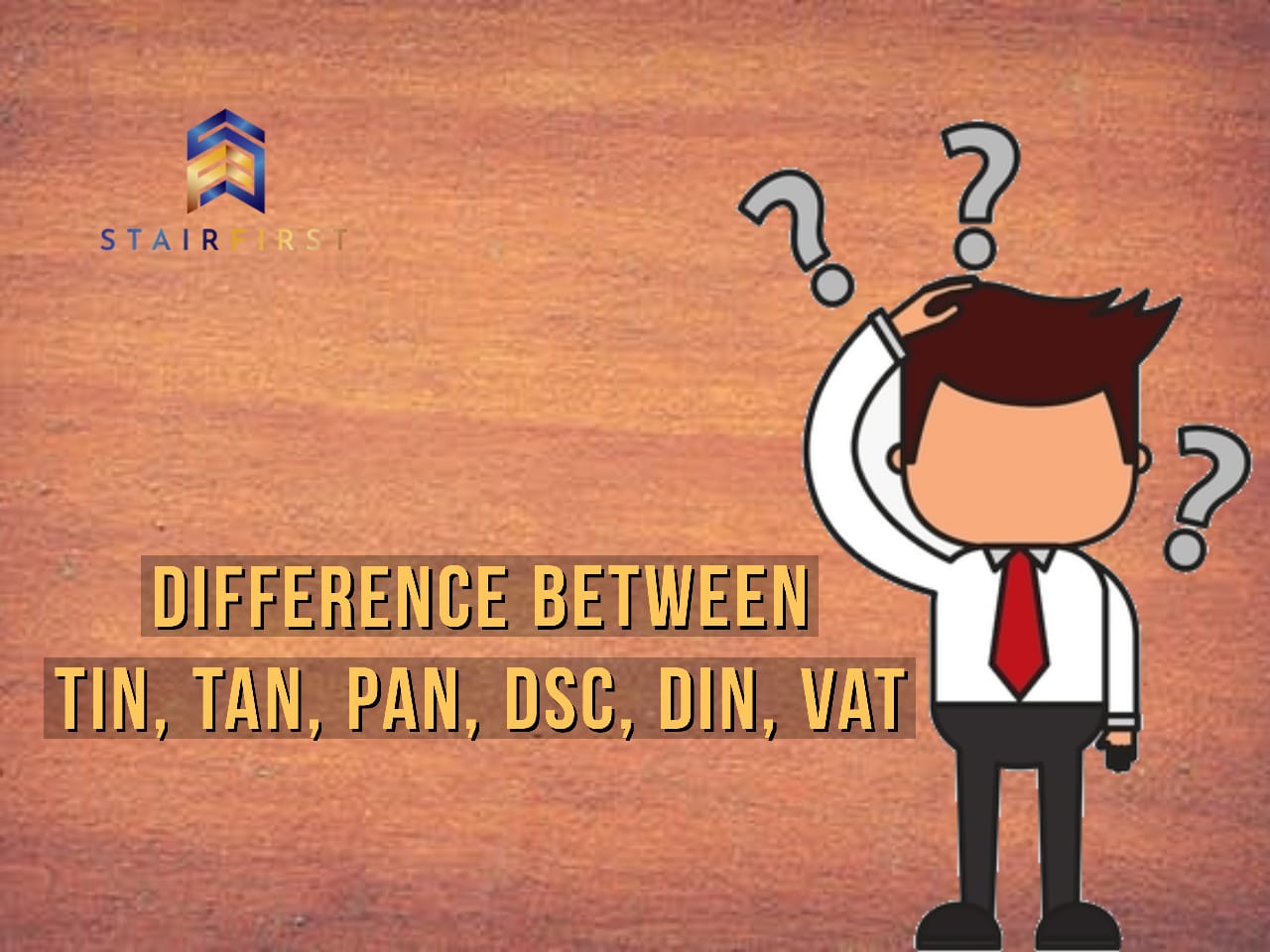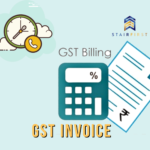There are different types of registration which a person needs under the provisions of various acts to perform business activities. There is no single registration which a person can apply for and comply with all the laws. Moreover, all these are different laws and statutes which need to be adhered to. As an end-user, we are always interested to know the difference between TIN, TAN, VAT, PAN, DSC and DIN. These 3 letters form the basis for business registrations in India.
For example, Mr. A want to form a Private Limited Company and he is into providing management consultancy services. Then Mr. A will need to prepare his DSC and need DIN for company registration. Then, he will also need a PAN and TAN in the company’s name. If during the yearly turnover of Mr. A’s company crosses the threshold limit, or other conditions are met, then he will also need to apply for GSTIN.
Difference between TIN and TAN, VAT, PAN, DSC and DIN
These are all the registration which a business may require to conduct its operation. Here in this article, we are going to discuss the basics of these registrations. Once the basics are clear you would be able to understand the difference between TIN, TAN, VAT, PAN, DSC and DIN. The information provided below is basic to help you understand the terms.
What is PAN?
- PAN stands for Permanent Account Number
- It is a unique 10-digit alphanumeric code
- It is issued by the Income Tax Department of India
- PAN is compulsory for every person who wants to file Income Tax Returns
- PAN is also compulsory for availing various other facilities provided by financial institutions such as loans, the opening of accounts, and more
- It is mandatory to quote PAN in transactions that are above a monetary limit as specified by the Government from time to time
- A person can be issued only one PAN
What is TIN/VAT? Difference between TIN and TAN
- TIN also is known as Taxpayer Identification Number is a VAT (Value Added Tax) number or CST (Central Sales Tax) Number or Sales Tax Number.
- Now, TIN is replaced by the GSTIN, since 1st July 2017.
- TIN is an 11-digit unique number allotted by the Commercial Tax Department of each State.
- Unlike GSTIN, under which a taxpayer can supply both goods and services, under TIN a taxpayer can only supply goods.
What is GSTIN?
- GSTIN stands for Goods and Services Tax Identification Number.
- GSTIN is given to those persons who are registered under the GST.
- It is a unique 15-digit code combination of PAN of the person and other alphabets and numbers.
- It represents both types of activities i.e. supplying goods and services.
- All users who were already registered under the old indirect tax system such as TIN/VAT were brought under the GSTIN system.
- New users can also be registered under GSTIN.
What is TAN?
- TAN is known as Tax Deduction and Collection Account Number
- It is a 10-digit alphanumeric number. The first three letters of the TAN represent the city or state where it was issued
- Every person who is liable to deduct or collect tax at source i.e. TDS or TCS must apply for TAN
- Any person cannot deduct tax unless he has obtained TAN
- If a person is liable to deduct tax and fails to apply for TAN, then Penalty can be levied on such person
- After getting a TAN a person must deduct and deposit tax on transactions specified under the provisions of Income Tax act 1961
- TAN number is mandatory to be quoted on Form 16/16A, 26AS
The key difference between TIN and TAN is the fact former has been abolished and replaced by GSTIN. Also, the difference between PAN and TAN is the fact that PAN is mandatory for all taxable persons whereas TAN is compulsory if you are liable to deduct tax.
What is DSC?
- Digital Signature Certificates (DSC) in common terms at best can be described as electronic signature or certificates
- They serve the same purpose as the signatures or certificates
- As normal certificates serve as proof of identity, similarly, they serve as proof of identity of an individual for certain online transactions and filings
- DSC can be used as an identity to access some information or sign documents digitally
- In other words, a digital signature best can be described as an electronic signature used to sign electronic documents
- These DSCs contain information about the user’s pin code, e-mail address, etc.
- DSCs are used to sign Income Tax Returns, ROC forms, fill online applications, etc.
- DSCs are classified into three classes – Class 1, Class 2, and Class 3.
- Digital Signature Certificates have limited validity, after the expiry of the said validity they are to be made again
- A person at a time can also hold 2 digital signatures one for business other for personal use
- DIN is known as Director Identification Number
- Every person who wants to be appointed as a Director in the Company must have a valid DIN
- DIN is issued by the Ministry of Corporate Affairs of India
- A foreign citizen can also obtain DIN
- DIN contains information of the Director provided at the time of applying DIN like identity proof, address proof
- DIN can be obtained by filing Form DIR-3 if a person wants to become a Director in an already incorporated company
- If a person wants to become a director in to be incorporated company, he can apply for DIN in the SPICE+ Form. SPICE+ is a form used for incorporation of the Company
- It is important to note, to apply for DIN, a person first needs to have DSC
- Without DSC the application for DIN cannot be filed
- If a person wants to form an LLP then he must apply for DPIN. (DPIN is LLP equivalent of DIN)
The above basics will help you understand difference between TIN, TAN, VAT, PAN, DSC and DIN. Once you are clear of the differences, need to apply for them basis various acts and regulations.

(FAQs): Difference between TIN and TAN, PAN, DSC, DIN, VAT
- Who is liable to apply for TAN?
Every person who is liable to deduct or collect tax at source i.e. TDS or TCS; is required to obtain TAN.
- Who allots TAN?
TAN is allotted by the Income Tax Department on receipt of application through online mode or offline at designated TIN Facilitation centers.
- I have applied for DIN but have not obtained DIN number yet, can I use provisional DIN for e-filing?
No, the provisional DIN cannot be used for signing e-form or signing as a director.
- Is there any difference between the TIN and VAT number?
There is no difference between TIN and VAT number, as only one is required for the inter-state supply of goods or services. GSTIN is a new system, which replaced the TIN system.
- Are TIN and GSTIN the same?
There is a difference between TIN and GSTIN. GSTIN is a new system, which replaced the TIN system.
- Why do I need a Digital Signature Certificate (DSC)?
DSC is needed to authenticate your identity electronically. Digital Signature / DSC is a secure way for conducting your online transactions ensuring your privacy. DSC can be used for encrypting information, so that only the intended user can read it.
- What is DIN?
DIN refers to Director Identification Number. It is a unique number issued to the person who wants to be a Director.
- What is the difference between TIN and TAN?
The key difference between TIN and TAN is the fact former has been abolished and replaced by GSTIN.
- What is the difference between PAN and TAN?
The difference between PAN and TAN is the fact that PAN is mandatory for all taxable persons whereas TAN is compulsory if you are liable to deduct tax



